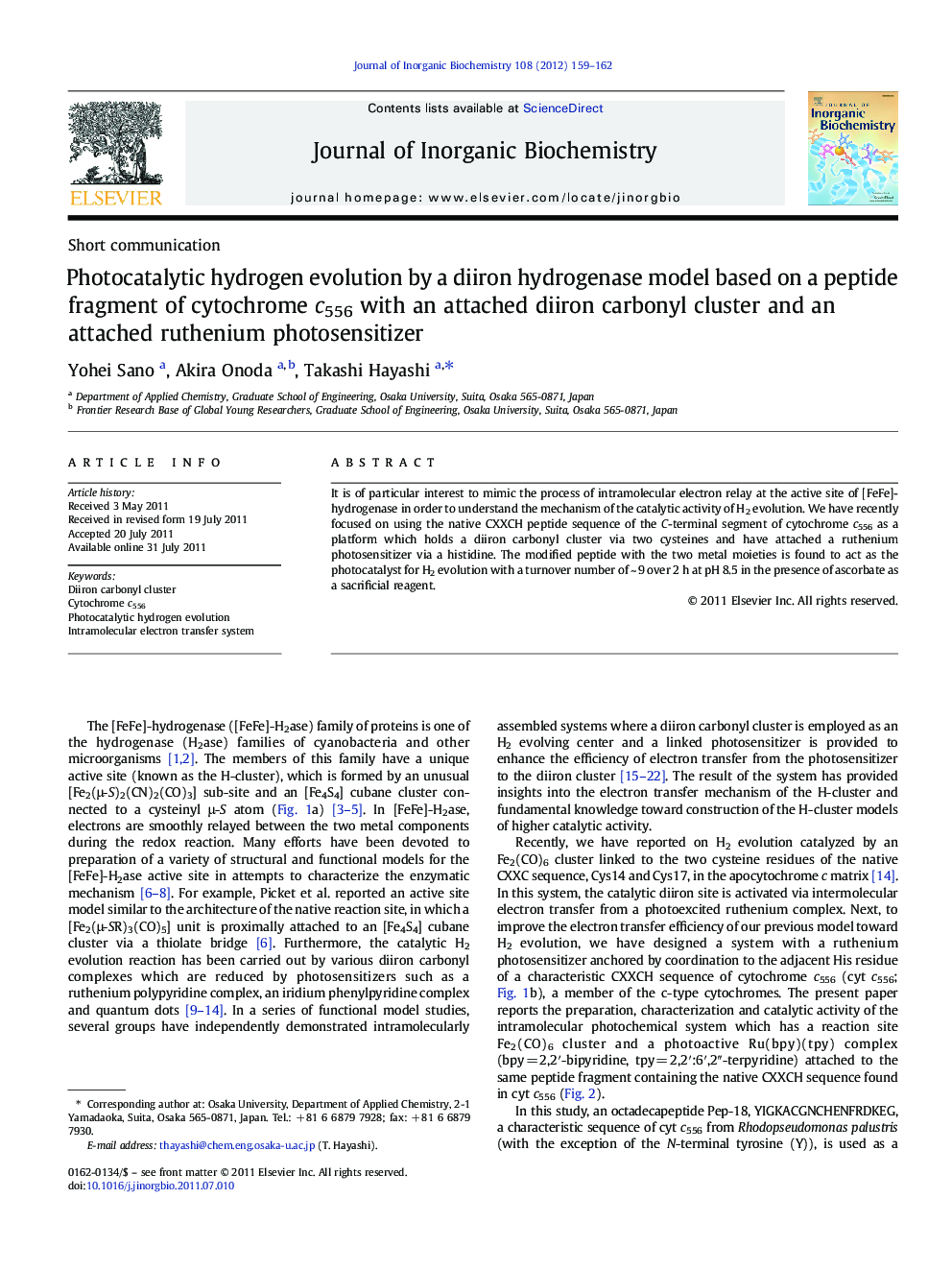| کد مقاله | کد نشریه | سال انتشار | مقاله انگلیسی | نسخه تمام متن |
|---|---|---|---|---|
| 1317811 | 1499479 | 2012 | 4 صفحه PDF | دانلود رایگان |

It is of particular interest to mimic the process of intramolecular electron relay at the active site of [FeFe]-hydrogenase in order to understand the mechanism of the catalytic activity of H2 evolution. We have recently focused on using the native CXXCH peptide sequence of the C-terminal segment of cytochrome c556 as a platform which holds a diiron carbonyl cluster via two cysteines and have attached a ruthenium photosensitizer via a histidine. The modified peptide with the two metal moieties is found to act as the photocatalyst for H2 evolution with a turnover number of ~ 9 over 2 h at pH 8.5 in the presence of ascorbate as a sacrificial reagent.
To create a [FeFe]-hydrogenase functional model, two essential components, a diiron carbonyl cluster and ruthenium photosensitizer, were attached to the CXXCH peptide platform of the cytochrome c556 sequence. The peptide–metal complex functions as a hydrogen-evolving catalyst with a turnover number of 9 over 2 h in water (pH 8.5).Figure optionsDownload as PowerPoint slide
Journal: Journal of Inorganic Biochemistry - Volume 108, March 2012, Pages 159–162